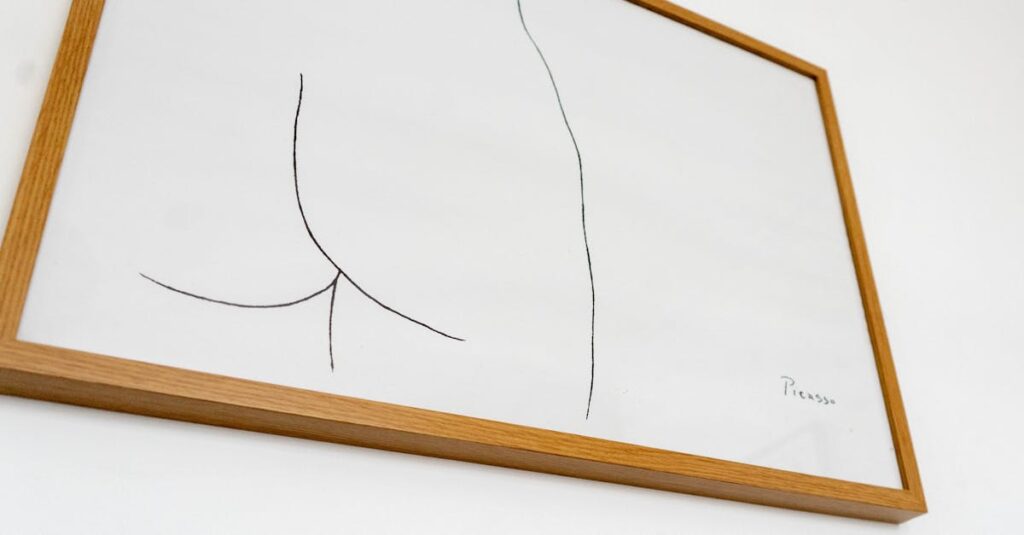Pablo Picasso’s groundbreaking abstract works revolutionized the art world and continue to captivate audiences today. His unique ability to deconstruct reality and reassemble it through geometric shapes and bold colors created a visual language that transcends traditional artistic boundaries.
The abstract piece “”az2zppzid50″” represents a prime example of Picasso’s experimental phase during his later years. This lesser-known work showcases his mastery of form and space while challenging viewers to explore multiple perspectives simultaneously. Like many of his abstract compositions it draws from his cubist roots while pushing into new territory that would influence generations of artists to come.
Abstract:az2zppzid50= Picasso
Picasso’s abstract period emerged between 1907-1925, marked by radical experimentation with form, perspective and spatial relationships. His transition from representational art incorporated fragmented geometric shapes, multiple viewpoints and distorted figures.
Key Characteristics
- Deconstructed forms through angular planes and geometric shapes
- Overlapping perspectives showing multiple angles simultaneously
- Limited color palettes focusing on earth tones and muted hues
- Flattened picture planes eliminating traditional depth
- Fragmented human figures and still life objects
Influences and Innovation
Abstract experimentation allowed Picasso to:
- Challenge conventional Renaissance perspective
- Incorporate African tribal art elements
- Develop analytical and synthetic cubism techniques
- Pioneer new ways of representing three-dimensional space
- Transform everyday objects into conceptual forms
Notable Works and Techniques
| Period | Technique | Representative Works |
|---|---|---|
| 1907-1909 | Proto-Cubism | Les Demoiselles d’Avignon |
| 1909-1912 | Analytical Cubism | Portrait of Daniel-Henry Kahnweiler |
| 1912-1919 | Synthetic Cubism | Still Life with Chair Caning |
| 1919-1925 | Post-Cubist Abstraction | Three Musicians |
- Simultaneous multiple viewpoints
- Integration of positive and negative space
- Rhythmic geometric patterns
- Tension between flatness and depth
- Interlocking planes and shapes
Key Elements of Picasso’s Abstract Style
Picasso’s abstract style centers on distinctive visual elements that define his unique artistic approach. His mastery of form deconstruction created a revolutionary visual language that transformed modern art.
Geometric Forms and Shapes
Picasso’s abstract works feature fragmented geometric patterns that break traditional representation into basic shapes. Angular triangles intersect with circular forms creating dynamic spatial relationships. His compositions incorporate:
- Fractured planes that segment objects into multiple viewpoints
- Overlapping polygons that create depth without traditional perspective
- Sharp angles combined with curved elements for visual tension
- Interlocking shapes that merge foreground with background
- Deconstructed forms that challenge spatial perception
- Monochromatic tones in grays browns for analytical cubist works
- Bold primary colors (red blue yellow) in synthetic cubist pieces
- Strategic use of black lines to define geometric boundaries
- Layered transparent planes that create tonal depth
- Contrasting light dark values to emphasize form
| Color Usage Period | Primary Colors | Secondary Elements |
|---|---|---|
| Analytical Cubism | Browns Grays | Limited palette |
| Synthetic Cubism | Primary colors | Pattern textures |
| Late Abstract | Vibrant hues | Bold contrasts |
Evolution from Cubism to Abstract Art
Picasso’s artistic journey from Cubism to abstract art marked a transformative period in modern art history from 1907 to 1935. His progression challenged established artistic conventions through innovative techniques and radical experimentation.
Breaking Traditional Art Boundaries
Picasso dismantled traditional artistic conventions through three key innovations:
- Eliminated single-point perspective by incorporating multiple viewpoints simultaneously
- Introduced geometric fragmentation to represent three-dimensional objects on flat surfaces
- Combined African tribal art elements with European painting techniques
His revolutionary approach manifested in specific techniques:
- Spatial Disruption
- Overlapped planes to create depth without traditional perspective
- Arranged forms in rhythmic patterns across the canvas
- Merged foreground and background elements
- Form Deconstruction
- Broke objects into geometric shapes: cubes, cylinders, cones
- Created angular intersections between forms
- Developed a modular approach to composition
- Color Evolution
| Period | Color Characteristics | Notable Examples |
|——–|———————|——————|
| Early Cubism (1907-1911) | Earth tones, browns, grays | Les Demoiselles d’Avignon |
| Analytical Cubism (1911-1912) | Monochromatic palette | Ma Jolie |
| Synthetic Cubism (1912-1915) | Bright colors, patterns | Three Musicians |
| Late Abstract (1915-1935) | Bold primaries, contrasts | The Three Dancers |
These innovations established a foundation for abstract art movements throughout the 20th century, influencing artists like Georges Braque, Juan Gris, and subsequent generations of abstract painters.
Most Influential Abstract Works
Picasso’s abstract masterpieces revolutionized 20th-century art through their innovative compositions and groundbreaking techniques. These works continue to influence contemporary artists and maintain their position as cornerstones of modern art history.
Notable Museum Collections
Major museums house Picasso’s most significant abstract works in their permanent collections:
- Museum of Modern Art (MoMA), New York
- “”Les Demoiselles d’Avignon”” (1907)
- “”Three Musicians”” (1921)
- “”Girl Before a Mirror”” (1932)
- Centre Pompidou, Paris
- “”Studio with Plaster Head”” (1925)
- “”Man with Guitar”” (1911)
- “”Head of a Woman”” (1909)
- Museo Reina Sofia, Madrid
- “”Guernica”” (1937)
- “”Woman in Blue”” (1901)
- “”Portrait of Dora Maar”” (1937)
| Museum | Number of Abstract Works | Notable Period Coverage |
|---|---|---|
| MoMA | 34 | 1907-1935 |
| Centre Pompidou | 28 | 1909-1930 |
| Museo Reina Sofia | 21 | 1901-1937 |
- Early Cubist experiments in form decomposition
- Analytical Cubist period with monochromatic palettes
- Synthetic Cubist works incorporating collage elements
- Late abstract pieces featuring bold color combinations
Impact on Modern Abstract Art Movement
Picasso’s abstract works revolutionized artistic expression, creating ripples across multiple generations of artists. His innovative techniques influenced three primary areas of modern abstract art:
Artistic Techniques
- Introduced spatial fragmentation through overlapping geometric shapes
- Established multi-perspective representation in single compositions
- Developed collage techniques incorporating found materials
- Created new methods for form deconstruction using angular planes
Contemporary Artist Influence
Modern artists incorporate Picasso’s abstract principles in distinct ways:
- Mark Rothko adapted Picasso’s color blocking techniques in color field painting
- Willem de Kooning utilized fragmented forms in abstract expressionism
- Jean-Michel Basquiat referenced Picasso’s primitive elements in neo-expressionism
- Frank Gehry translated Picasso’s geometric principles into architectural design
Institutional Recognition
Leading art institutions showcase Picasso’s abstract influence:
| Institution | Location | Notable Abstract Collection Features |
|---|---|---|
| MoMA | New York | 15 major abstract works influencing American modernism |
| Tate Modern | London | 12 pieces demonstrating geometric abstraction evolution |
| Centre Pompidou | Paris | 20 works showing cubist-abstract transition |
Academic Impact
Picasso’s abstract innovations transformed art education:
- Established new vocabulary for formal analysis in art criticism
- Created foundational principles for abstract composition studies
- Influenced curriculum development in major art schools
- Generated frameworks for understanding non-representational art
- Influenced sculptural forms through geometric deconstruction
- Shaped graphic design through fragmented typography
- Impacted photography through multiple perspective techniques
- Inspired digital art through layered composition methods
Picasso’s Abstract Masterpiece
Picasso’s abstract masterpiece “”az2zppzid50″” stands as a testament to his revolutionary artistic vision that forever changed the landscape of modern art. His groundbreaking techniques and fearless experimentation with form color and perspective continue to influence artists across multiple disciplines today.
The profound impact of his abstract works extends far beyond traditional painting into architecture sculpture and digital art. Through his innovative approaches to spatial relationships and geometric fragmentation Picasso didn’t just create art – he redefined how future generations would perceive and create it.
As museums worldwide showcase his legacy Picasso’s abstract period remains a pivotal moment in art history that bridges classical traditions with contemporary expression. His work continues to challenge inspire and shape artistic discourse in the 21st century.

